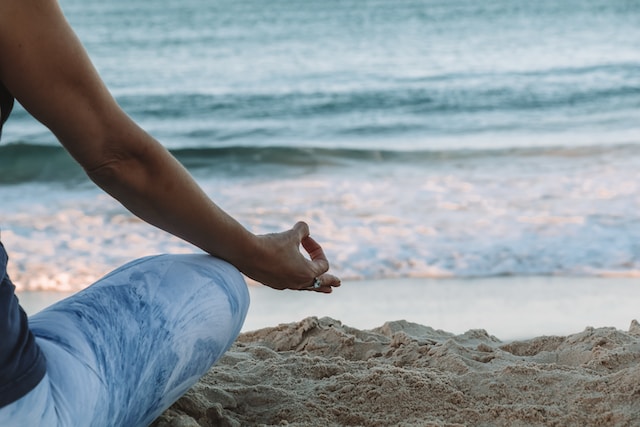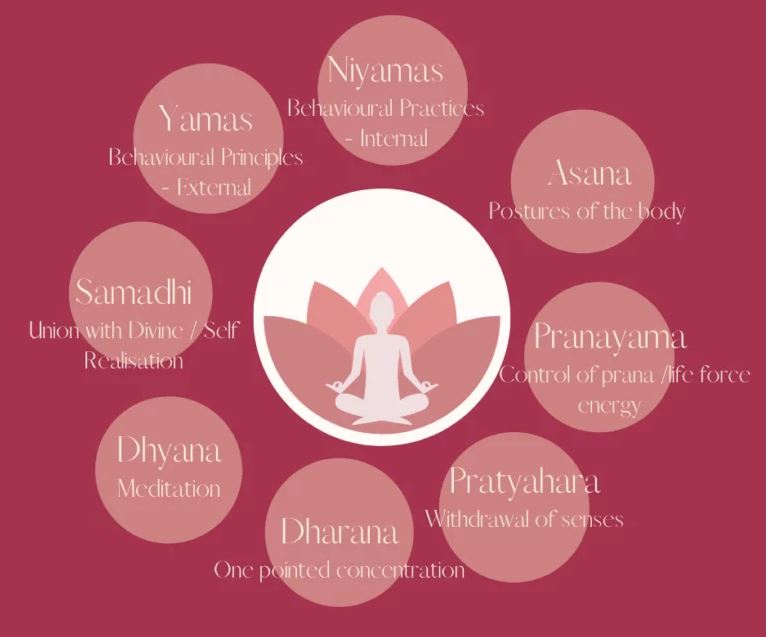Meaning and Origins
“Meditation” is derived from the Latin words “meditari” and “mederi”, meaning to think, dwell upon, and to heal, and the Sanskrit word “medha”, which means wisdom.

Meditation is a practice of going within oneself to quieten the mind and to achieve an altered state of consciousness.
A resting state, deeper than that if one was asleep, yet with a sense of alert awareness. Meditation helps to calm the mind and cultivate a practice of self-awareness, observation, and inquiry. Which in turn helps to develop a conscious awareness of life as it is. The purpose is to connect with oneself on a deep soul level–to know oneself as beyond the limitations of the body and mind. It helps enable us to see the truth of who we are, as well as see the “bigger picture”, and in doing so can also help to put things into perspective better.
Seeing everything through the lens of the detached witness, so to speak, so that we can deal with life’s challenges in a calmer, balanced state of mind, we can make rational decisions and generally go about our daily lives with more ease and grace. It is a practice that becomes a way of life.
Throughout history people have practised meditation in various forms as part of different traditions across the globe, though seemingly with the same goal and purpose and spiritual (though not necessarily religious) roots.

Yoga Sutras and Meditation
In the yogic tradition in Patanjali’s famous Sutra – “Yogah chitta vritti nirodhaha”, defines yoga as “the cessation of the fluctuations of the mind.” Meditation calms the turbulences in the consciousness and therefore takes one to the deepest experience of yoga.
Patanjalis’ yoga sutras outline eight aspects or principles
These are shown in the diagram (known as the “eight-limbs” or “eight fold path” of yoga, namely – Yamas, Niyamas, Asana, Pranayama, Pratyahara, Dharana, Dhyana, Samadhi) that aims to take us from the physical, to the subtle, through to the absolute, ultimate connection and mergence with the Universal consciousness (to experience complete oneness). A sense of being connected with all that is and where there is no separate sense of “I”.
“Satchitananda” – Absolute truth, consciousness, bliss.

Here meditation is included as an integral part of this path and practice and presented as the seventh limb. These eight limbs are not only a path to reach the ultimate goal of self-realisation but can also be seen as aspects of our life orientation, giving guidance and tools on how to live our lives in the most beneficial, optimal, and highest expression.
It is interesting and important to note that the Yoga Sutras contain only two Sutras related to asana. The majority of the Sutras are related to the internal factors of meditation – samadhi and samyama (deep yogic awareness), which are the basis of yogic self-realisation.
Yoga asanas actually lead one to meditation because they are accompanied with conscious awareness of breath, conscious breathing and conscious relaxation.
Conscious breathing, conscious concentration, conscious relaxation, and a steady asana (posture) will automatically bring one into the state of meditation. One could therefore say that yoga is meditation and meditation is yoga.
The main purpose of yoga or meditation is to achieve a higher state of consciousness, which goes way beyond the physical and mental, and to maintain this. With regular practice it has the potential to connect us, with all levels of consciousness beyond the ordinary, to the highest subliminal and cosmic layers unknown to ordinary awareness and everyday sciences.

This however is a gradual process, and through my own experience the focus is initially on the process of purification of the body and mind, taking an integrated approach through the body, mind and emotions in preparation and readiness for accessing deeper levels of meditation and transcendence. Only once we have a healthy, balanced, supported, integrated and stable foundation can we hope to attain the main goals of yoga and get the most benefit and spiritual evolution from our practice.
Meditation should not be separated from life, but integrated.
It cannot always be expected to “work right away”, though many people notice subtle changes for the better soon after they start regular practice. It is a culmination of a purified and sattvic life, a holistic approach to living.
When starting it is beneficial to first let go of all expectations and to simply keep oneself open and steady in the meditation practice. Simply allow, surrender and observe. Meditation should never feel forced or restrictive.

If for whatever reason you find it difficult at first, you may find it helpful to simply try to sit quietly, slowly withdraw the senses, and concentrate the mind. Withdrawing senses and calming the mind often leads to meditation (as per the limbs of yoga) – for example pranayama (focus on breath), pratyahara (withdrawal of senses practices), and dharana (one pointed concentration).
Types of Meditation
There are many different types of meditation practices, some of which include:
- Mindfulness
- Simple mantra
- Empty mind
- Breath observation
- Walking (such as labyrinth or simply connecting with nature)
Essentially what these methods have in common is that they take the meditator into a deeply relaxed transcendental state where one can experience complete clarity of mind with no thoughts.
At first when one begins a practice these, moments of thoughtlessness may be fleeting, yet still allowing one to enter such a serene space that the benefits are impactful and lasting. Gradually, with daily practice we experience these moments becoming extended and their benefits increased.
Regularly going into this deep state of relaxation brings balance and healing on all levels – mental, physical and spiritual.
It works on a single principle that the mind is the key to our overall health.
Benefits of Meditation
Some healing positive “side-effects” of regular meditation practice include:
- Reduced levels of stress and anxiety
- Reduced physical pain and boosted immune system
- Lowered blood pressure and increased blood flow to the brain
- Encourages deep relaxation and feelings of peace
- Focuses the mind and promotes deep sleep
- Increased concentration
- Enhances creativity and opens the mind to new ideas
- Improves memory
- Identifies and balances emotions
- Creates a deeper understanding and awareness of other people. Therefore, it has the capacity to improve relationships.
- Creates focus in your day and assists with decision making
- Connect you to your spiritual purpose/direction
- Encourages balance in the subtle energies, energy centres (chakras) and expansion of our energy field
- Raises vibration of our own energies, energy field and this impacts the people/environment around us
- Expansion of our energies leading to increased consciousness and connection with Divine energy/higher self/God consciousness
Did you know that daily practice of meditation not only raises the vibration of our own energy field, but also impacts the people/environment around us?
Studies have shown that when groups of people regularly come together to meditate-the surrounding area benefits from the positive energy generated. Plants thrive, people report feeling happier/healthier and crime rates lower.




